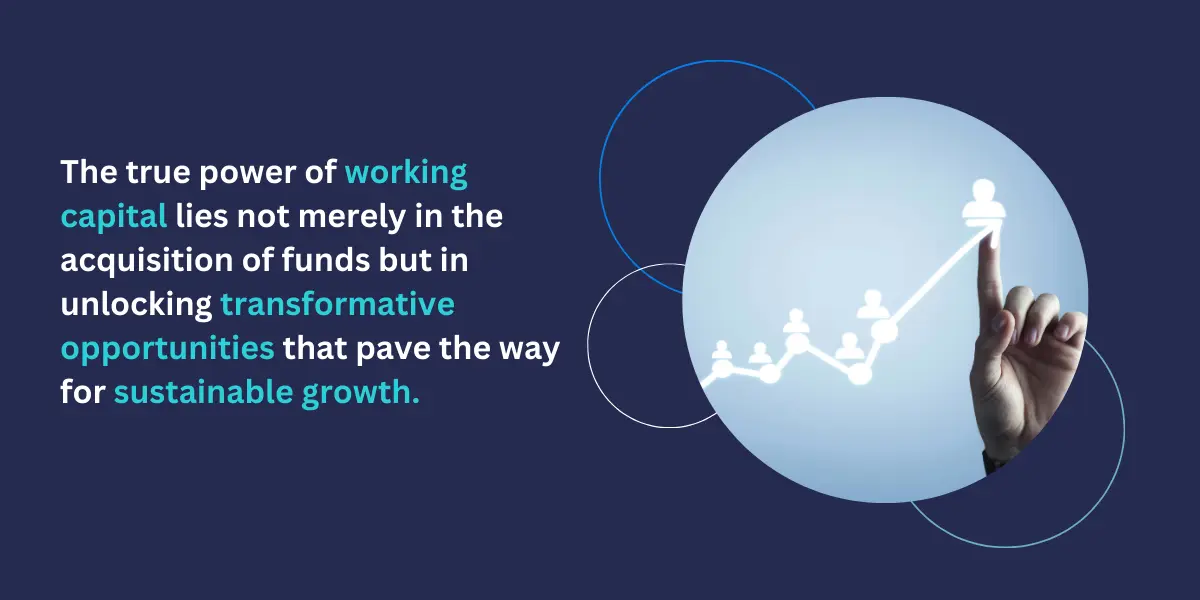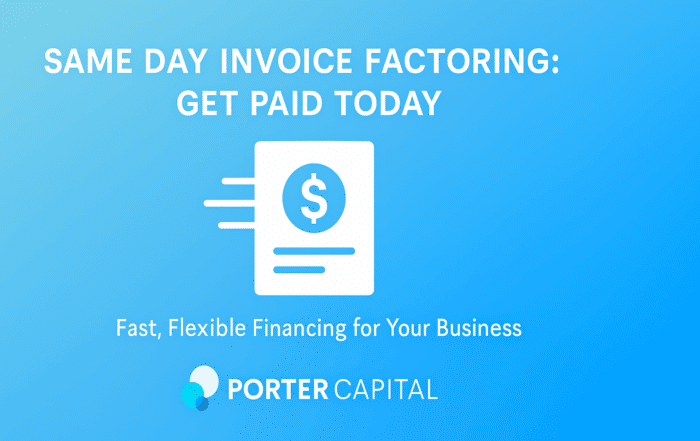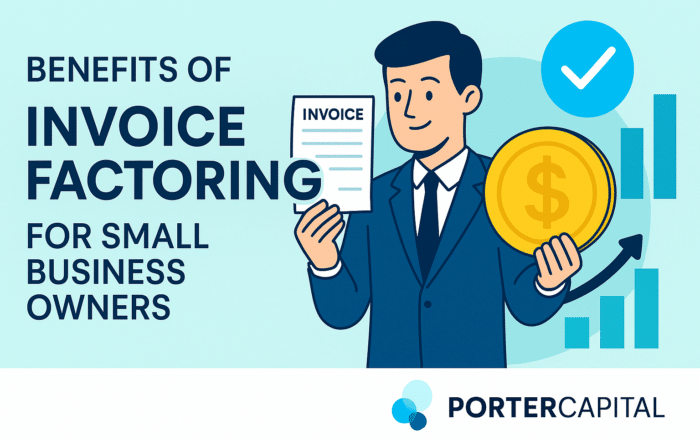Reading Time: 3.6 minutes
Last updated: January 17, 2025
A crucial aspect of corporate leadership is ensuring long-term financial viability and profitability, and that comes from working capital. This involves implementing innovative and efficient practices to reduce costs and improve profitability. Additionally, it includes investing in sustainable technologies and processes that enhance productivity and competitiveness.
Working capital is a measure of a company’s operational liquidity and short-term financial health. It is calculated as the difference between a company’s current assets and current liabilities. The formula is:
Working Capital = Current Assets – Current Liabilities
Maximize Business Growth with Strategic Working Capital Solutions
Positive working capital indicates that a company has sufficient assets to cover its short-term liabilities, which is essential for smooth business operations and financial stability. Negative working capital may suggest potential liquidity issues, indicating the company might struggle to meet its short-term obligations or even have an impact on its credit score. Maintaining a strong credit history is equally important for a company’s ability to secure favorable business loans.
Knowing how to leverage working capital for sustainable business development is a crucial element in nurturing long-term success. By harnessing the power of funding sources, businesses can not only expand their operations but also foster innovation.

Understanding the Importance of Working Capital
| Aspect | Description | Impact on Business |
|---|---|---|
| Operational Liquidity | Working capital is a measure of a company’s short-term financial health, calculated as Current Assets – Current Liabilities. | Positive working capital ensures that a business can meet its short-term obligations and maintain smooth operations. |
| Strategic Growth | Access to working capital enables businesses to invest in expansion, innovation, and strategic partnerships. | Unlocks opportunities for scalability and enhances competitiveness in the market. |
| Capital Efficiency | Maximizing returns on working capital involves efficient resource use, lowering costs, and improving productivity. | Enhances financial performance and resilience against market fluctuations. |
| Innovative Strategies | Effective management of accounts receivable, payable, and cash flow are vital for leveraging working capital. | Drives significant change, improves supplier relationships, and fosters long-term sustainability. |
Understanding the Impact of Working Capital
Access to capital unlocks the potential for business expansion, facilitates strategic partnerships, and can boost technological advancements. By injecting a fresh wave of resources into a business, it acts as a springboard, opening possibilities and fostering scalability and efficiency.
Moreover, it often ushers in a period of strategic reassessment and realignment, encouraging companies to refine their business models, streamline operations, and explore untapped markets. In essence, the true power of working capital lies not merely in the acquisition of funds but in unlocking transformative opportunities that pave the way for sustainable growth.
Embracing an integrated approach involves more than just financial transactions—it embodies a strategic mindset that envisions long-term sustainability, innovation, and competitive advantage. The strategic deployment of working capital aligns financial objectives with organizational vision, steering businesses towards a trajectory of expansion, impact, and enduring value creation.
Maximizing Returns through Capital Efficiency
Maximizing returns depends on efficient and effective resource use. This means lowering costs, improving productivity, and reducing inefficiencies.
By focusing on capital efficiency, businesses can increase ROI, improve financial performance, and strengthen resilience against market changes. This requires examining processes, finding value opportunities, and aligning resources with strategic goals.
Capital efficiency is key for sustainable growth, minimizing waste, and ensuring financial stability. Emphasizing continuous improvement and operational excellence helps businesses fully leverage working capital for innovation, expansion, and long-term value.
Innovative Approaches to Leveraging Working Capital
Adopting effective working capital strategies is crucial for growth, competitiveness, and resilience. These strategies include managing accounts receivable, accounts payable, and cash flow. Financing options, such as business loans for short-term needs or factoring by selling accounts receivable, can also be vital.
Improving supplier relationships, inventory management, and operational efficiencies can drive significant change and value. By focusing on long-term value and sustainability, businesses can stay competitive and resilient. In today’s business landscape, innovative capital management is key to future growth and impact. Creative and agile approaches ensure lasting success.
Strategic Capital Management with Porter Capital
If you’re a business in the growth or expansion phase looking to fuel progress, innovation, and longevity for your company, consider Porter Capital for your financial needs. Apply now for same-day financing for your company, or call 1-888-865-7678 to learn more.




